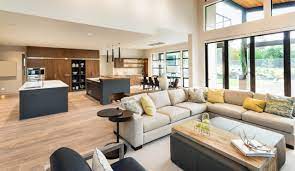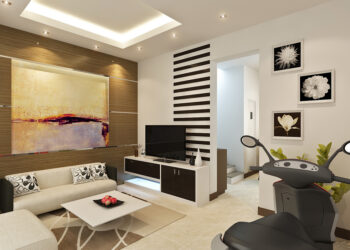In the ever-evolving landscape of home design, the concept of an open floor plan has gained immense popularity. However, striking a balance between openness and functionality has led to the rise of a trend known as the “Harmony Barrier.” This design innovation involves creating a half wall between the kitchen and living room, providing both separation and cohesion. In this comprehensive guide, we delve into the intricacies of designing the perfect half wall to elevate your living space.
The Evolution of Home Design
Embracing Openness
The open floor plan trend emerged as a response to the desire for spacious, interconnected living spaces. It promotes a sense of unity, making homes feel larger and more welcoming. However, it comes with challenges, particularly in defining distinct zones within a vast, open space.
Challenges of Complete Openness
While open floor plans foster social interaction and flexibility, they often lack the definition needed to delineate specific areas. This is where the concept of the Harmony Barrier steps in, providing a visually appealing solution to balance openness and functionality.

Designing the Perfect Half Wall
1. Purposeful Partitioning
Creating a half wall is not merely about dividing spaces; it’s about purposeful partitioning. Identify the functions of each area and design the wall to complement those needs. This could range from providing a surface for casual dining to incorporating storage solutions.
2. Material Matters
Choosing the right materials for your half wall is crucial. Opt for materials that harmonize with the overall aesthetic of your home. Whether it’s sleek glass, rustic wood, or contemporary metal, the material should enhance the visual appeal while serving its functional purpose.
3. Height Considerations
The height of your half wall is a key factor in achieving the desired harmony. A waist-high wall can create a subtle division without compromising the visual connection between spaces, while a taller wall offers more privacy. Striking the right balance ensures an optimal blend of separation and openness.
4. Seamless Integration with Decor
Ensure that the half wall seamlessly integrates with your interior decor. This involves selecting colors, textures, and finishes that complement the existing design elements. A well-integrated half wall becomes a natural extension of the space, enhancing the overall aesthetic.
5. Lighting Strategies
Strategic lighting can transform the half wall into a focal point. Consider incorporating recessed lighting, pendant lights, or even LED strips to highlight the architectural features of the wall. This not only adds visual interest but also contributes to the functionality of the divided spaces.
Benefits of the Harmony Barrier
Spatial Definition
The half wall provides a clear visual distinction between the kitchen and living room, defining separate areas while maintaining a sense of openness.
Enhanced Privacy
For homeowners who enjoy a degree of privacy in the kitchen area, the Harmony Barrier offers an elegant solution without completely closing off the space.
Aesthetic Appeal
When thoughtfully designed, the half wall becomes a design element in itself, contributing to the overall aesthetics of the home.
Functional Versatility
Beyond aesthetics, the half wall can serve multiple functions, such as additional storage, a breakfast bar, or a display surface.
Conclusion
In the dynamic realm of modern home design, the Harmony Barrier emerges as a sophisticated solution to the challenges posed by open floor plans. By skillfully incorporating a half wall between the kitchen and living room, homeowners can achieve a perfect balance of separation and unity. The key lies in purposeful design, thoughtful material selection, and seamless integration with the existing decor. Elevate your living space with the Harmony Barrier, where design meets functionality in perfect harmony.








Comments 1